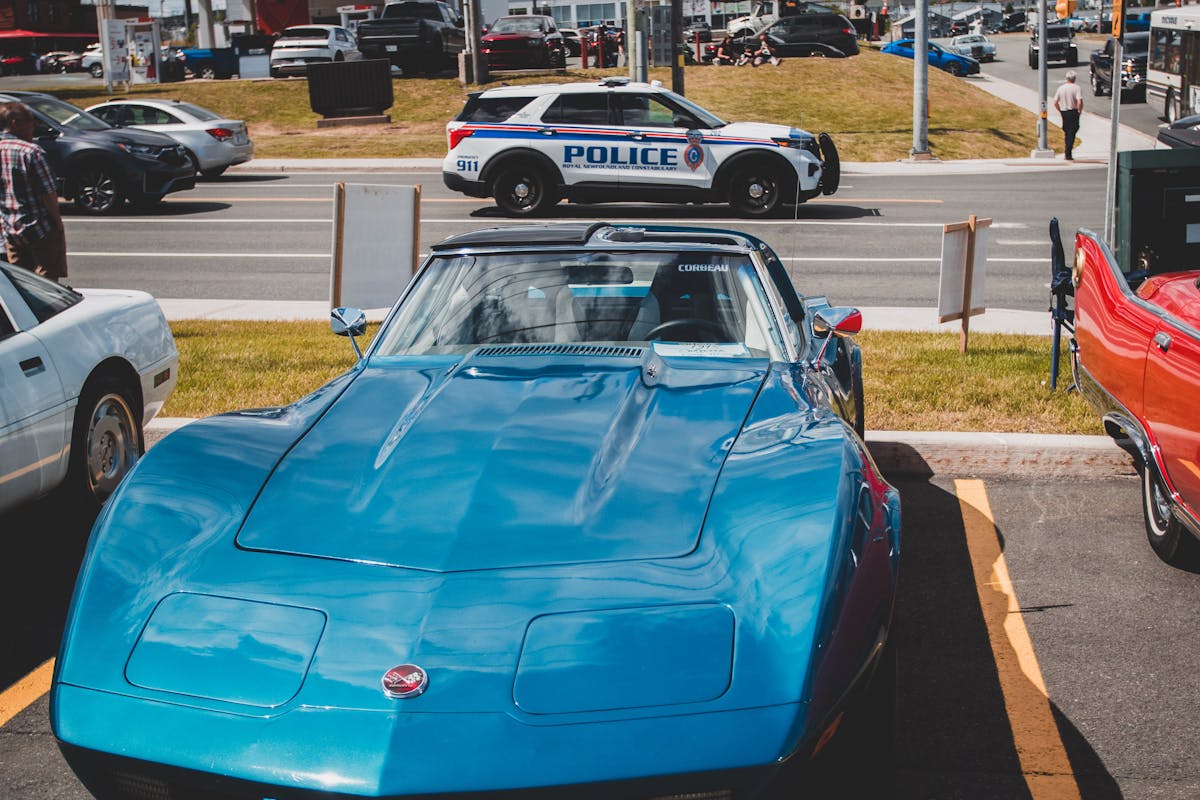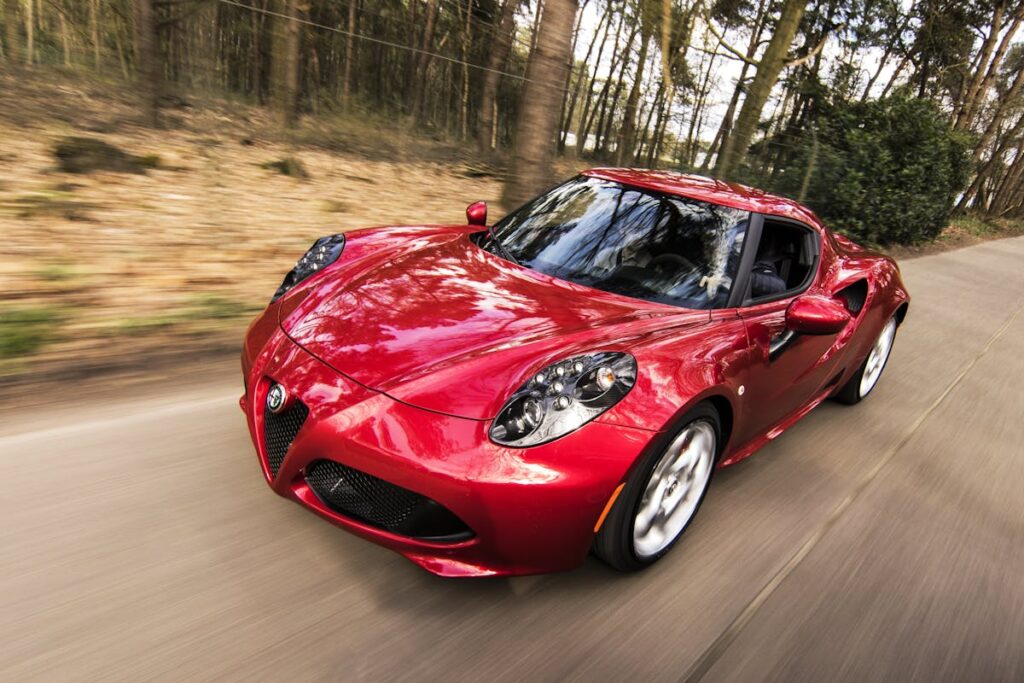The automobile industry has seen countless innovations, but certain models have left an indelible mark, setting benchmarks that still resonate today. The 1961 Jaguar E-Type, the 1963 Chevrolet Corvette, the 1987 Ferrari F40, the 1997 McLaren F1, and the 2005 Bugatti Veyron each epitomize a unique blend of performance, aesthetics, and engineering prowess. As we explore these masterpieces further, we will shed light on their unique attributes and contributions to the automotive world. Will you join us on this riveting journey through automotive history?
The Timeless 1961 Jaguar E-Type
Commanding the international stage upon its debut in 1961, the Jaguar E-Type remains an unequivocal icon in the domain of automotive design. Its E-Type design, a marriage of form and function, was unprecedented, and it set a new standard for what a sports car could be. The E-Type’s elongated hood, streamlined profile, and high performing engine, which could reach speeds of over 150 mph, were evidence of Jaguar’s commitment to innovation and performance.
The E-Type’s groundbreaking design was a significant part of the Jaguar legacy. The car’s unique blend of beauty, high performance, and competitive pricing established it as an object of desire for auto enthusiasts around the world. Its introduction marked a major breakthrough in the design of sports cars, influencing generations of automotive designers.
The Jaguar E-Type, with its iconic design and powerful performance, has earned its place in automotive history. Its legacy continues to inspire today’s generation of car designers and engineers, underscoring the timeless appeal of the E-Type. Indeed, the Jaguar E-Type is not just an automobile; it’s a legend that has shaped the trajectory of the automotive industry.
Unveiling the 1963 Chevrolet Corvette
In the domain of automotive design, the 1963 Chevrolet Corvette stands as a notable milestone. This iconic car, a vital part of Corvette history, marked a new era of American muscle cars, combining outstanding performance with breathtaking design. Introduced in the ‘Split Window’ coupe version, its unique rear window design became an instant classic.
The 1963 Corvette was the first of the second-generation Corvettes, known as the C2 series. It was also the first to bear the name ‘Sting Ray’, symbolizing its sleek and aggressive design. The ’63 Corvette’s performance specs were equally impressive. Under the hood, it packed a potent 327 cubic inch V8 engine, capable of producing between 250 to 360 horsepower, depending on the chosen configuration.
The Corvette was not just about raw power, though. It featured a new independent rear suspension and a chassis greatly improved over the first generation, offering better handling and ride comfort. The 1963 Chevrolet Corvette was a perfect blend of performance, style, and innovation, solidifying its place as one of the most legendary cars in automotive history.

The Revolutionary 1987 Ferrari F40
Moving forward in time, we land on the year 1987, a year that saw the birth of a truly revolutionary automobile, the Ferrari F40. The F40 design was radical and groundbreaking for its era, with an aerodynamic profile, aggressive sharp lines, and a generously vented bodywork. It was the first production car to be constructed primarily of lightweight composites, with a widespread use of carbon fibre and Kevlar.
The F40 performance was equally impressive, powered by a 2.9-litre, twin-turbocharged V8 engine that churned out an unprecedented 471 horsepower. This, combined with its lightweight construction, allowed the F40 to sprint from 0 to 60 mph in just 4.1 seconds, and achieve a top speed of over 200 mph, a remarkable feat for its time.
The F40 was not just a car, but a symbol of Ferrari’s racing pedigree and technological prowess. It blurred the lines between a road car and a race car, and set new standards in the world of supercars. The 1987 Ferrari F40 was, and remains, a testament to automotive ingenuity and engineering superiority.
Understanding the 1997 McLaren F1
Stepping onto the stage of automotive excellence in 1997, the McLaren F1 took the world by storm with its pioneering design and unrivalled performance. A product of ingenious McLaren engineering, this car became the epitome of speed and luxury, redefining the parameters of the automotive industry.
The F1 was not just a car; it was a manifestation of the F1 legacy, an icon, a proof of the relentless pursuit of perfection. The heart of this beast was a 6.1L V12 engine, capable of delivering an impressive 627 horsepower. This allowed it to accelerate from 0 to 60 mph in just 3.2 seconds, a feat that was unparalleled at the time.
Its three-seater design, with the driver sitting in the middle, was a bold departure from traditional layouts and further emphasized its race-car pedigree. The use of advanced materials such as carbon fibre, kevlar, and aluminium guaranteed its lightweight structure without compromising on strength.
Marvel at the 2005 Bugatti Veyron
Leaving behind the speed and ingenuity of the 1997 McLaren F1, we arrive at a new automotive marvel, the 2005 Bugatti Veyron. This luxury performance vehicle is an engineering marvel, flawlessly blending speed, power, and elegance. Beneath its sleek, aerodynamic design lies a heart of pure power: a quad-turbocharged 8.0-liter W16 engine.
Here are some key features that make the 2005 Bugatti Veyron an amazing car:
- Engine: Fitted with a monstrous 8.0-liter W16 engine, the Veyron is a behemoth that produces a staggering 1,001 horsepower.
- Acceleration: The Bugatti Veyron can accelerate from 0 to 60 mph in just 2.5 seconds, making it one of the fastest cars in the world.
- Top Speed: It has a top speed of 253 mph, a record-breaking achievement at the time of its release.
- Design: The Veyron’s design is a blend of luxury and aerodynamics, bearing the hallmarks of Bugatti’s commitment to excellence.
The 2005 Bugatti Veyron stands as a demonstration of the possibilities of automotive engineering, setting new standards for luxury performance vehicles. It is, without doubt, one of the most amazing cars of all time.
Frequently Asked Questions
What Are the Most Expensive Cars Ever Sold at Auction?
The most expensive cars sold at record auctions often reflect the collector markets’ appreciation for rarity and heritage. Remarkably, the 1962 Ferrari 250 GTO and 1957 Ferrari 335S have fetched astronomical prices due to their historic significance.
How Do These Cars Compare in Terms of Fuel Efficiency?
When comparing these high-end vehicles with respect to fuel economy, they typically prioritize performance over efficiency. However, recent models have started to incorporate alternative energy sources to improve their sustainability and fuel consumption rates.
What Modern Safety Features Are Lacking in These Classic Cars?
Classic vehicles, while aesthetically appealing, often lack modern safety features such as advanced seat belts and crumple zones, which are designed to absorb impact, thereby enhancing passenger protection during collisions.
Are There Any Female Designers Notable in the Automotive Industry?
Yes, there are several notable female automotive pioneers. Michèle Mouton and Helle Nice greatly impacted car design, contributing innovative aesthetics and functional improvements that have shaped the industry’s evolution and broadened the scope of automotive design.
How Have These Cars Influenced the Design of Current Generation Vehicles?
The design evolution of iconic cars has greatly influenced current generation vehicles, showcasing technological advancements and aesthetic innovation. Their cultural impact has shaped consumer expectations, driving the industry towards sleeker designs and superior performance.

